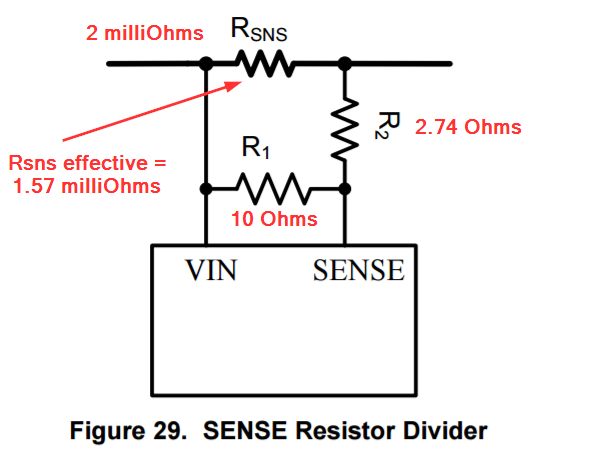Hello,
I currently have a design for high current limit which works well for me. I am using a LM5069 with a current limit of 0.055V / 0.002 Ohms = 27.5A
I would like to be able to scale this current limit a bit higher but of course at such low ohmic sense resistors, the only mainly available values
in this range of 1 milliohm would double it. If I am trying to achieve a CL of 35A, for example, would the following modification circuits work?
In the above example I took my signal from my 2 milliohm sense resistor and divided it with a voltage divider but with
a small effective resistance
In the second example above, I just added a second kelvin resistors of 7.32 milliohm for a total effective sense resistance of 1.57 milliohms.
0.055V / 0.00157 Ohms = 35A
Can someone tell me either of the above is okay? Or both if that is the case? If both are okay, is one preferrable to the other?
Thanks.
Dan


